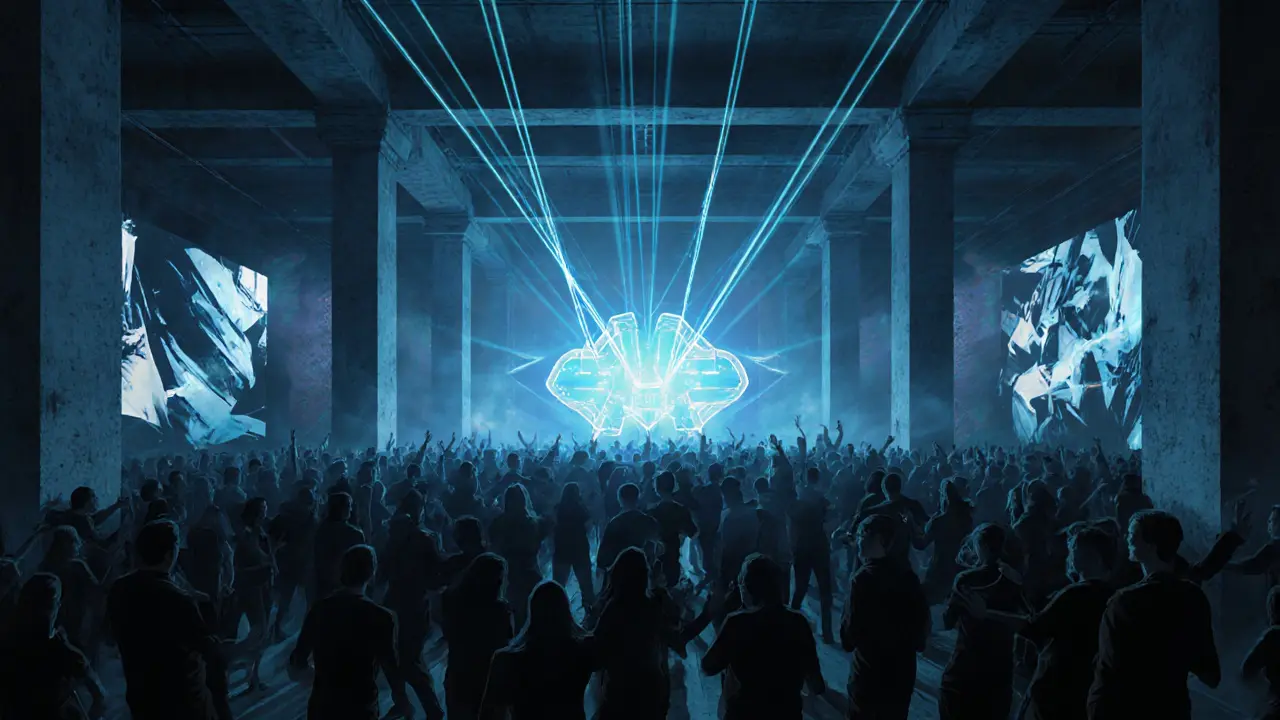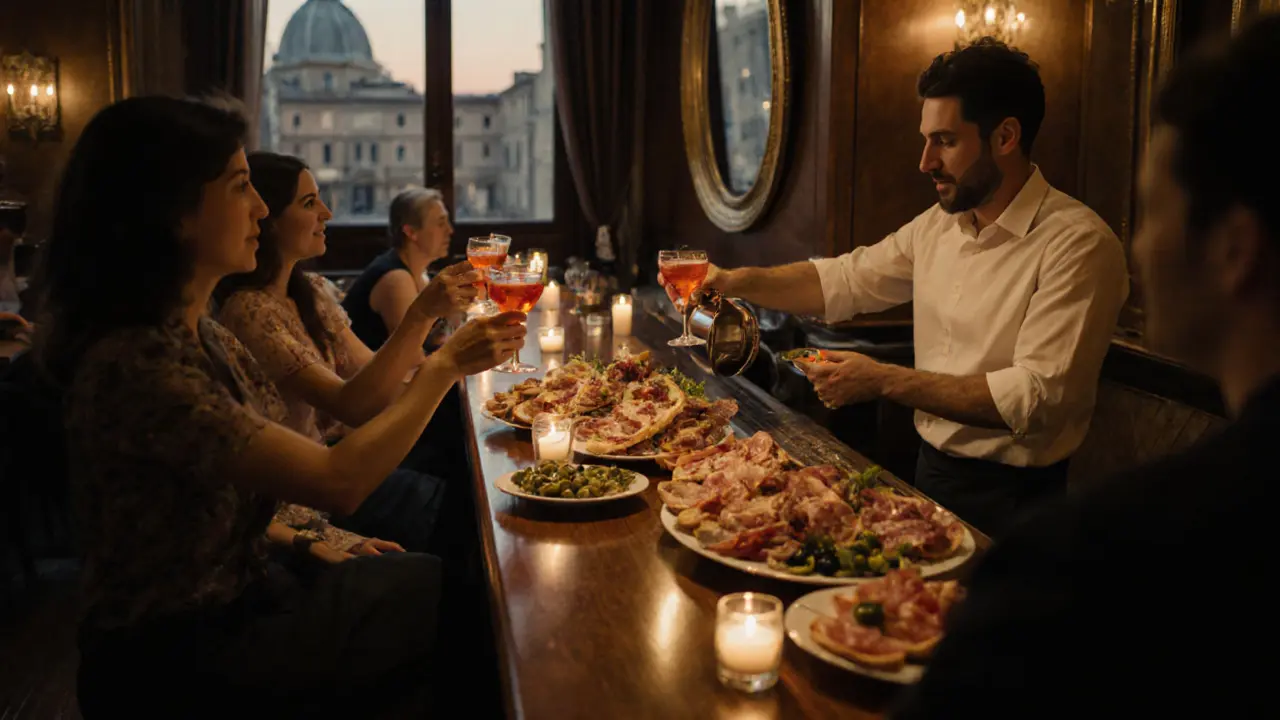Milan Nightlife - The Ultimate Party Guide

When the sun sets over Milan, the city doesn’t sleep-it rewires itself. The same streets where designers show off their latest collections by day turn into pulsing corridors of music, laughter, and neon by night. This isn’t just a city with a few trendy bars. Milan’s nightlife is a layered, evolving beast: underground techno dens, rooftop lounges with skyline views, historic wine bars that feel like secret clubs, and massive clubs that draw international DJs every weekend. If you’re looking for a night out that’s more than just a drink and a playlist, you need to know where to go, when to show up, and what to expect.
Where the Real Nightlife Starts: Navigating the Zones
Milan isn’t one big party. It’s a collection of distinct neighborhoods, each with its own rhythm. Get this wrong, and you’ll end up in a place full of tourists sipping overpriced Aperol spritzes while the real action is happening ten minutes away.
Brera is the romantic, artsy side of the night. Think dim lighting, jazz lounges, and wine bars with leather booths. It’s where locals unwind after dinner, not where you go to dance until dawn. The vibe here is quiet, intimate, and expensive. If you’re looking for a cocktail with a view of candlelit courtyards, this is your spot.
Porta Ticinese is where Milan gets wild. This is the heart of the city’s underground scene. The streets here are lined with bars that spill onto sidewalks, and you’ll find everything from punk rock pubs to vinyl-only DJ booths. It’s gritty, real, and cheap. You won’t find velvet ropes here-just a crowd of students, artists, and expats who know the best parties happen in basements. Bar Basso is legendary for its aperitivo, but head to La Scala or Magazzini Generali after 11 PM for live bands and house music.
Zona Tortona is the industrial-chic zone. Once a warehouse district, it’s now home to some of the city’s most experimental clubs. Magazzini Generali and Officine Grandi Riparazioni host underground techno nights with lighting designed by artists and sound systems imported from Berlin. These aren’t your typical club nights-they’re art installations with beats. Dress code? Black. Attitude? Zero tolerance for pretending you know what you’re doing.
Corso Como is Milan’s answer to Ibiza’s beach clubs. It’s sleek, stylish, and packed with models and influencers. The bar here is more about being seen than dancing. But if you want a VIP table with a view of the city lights and a bottle of champagne that costs more than your hotel room, this is where you go. The music is deep house, the crowd is curated, and the door policy is strict. Don’t expect to walk in without a connection or a good outfit.
Clubbing Like a Local: The Best Clubs in Milan
Milan’s top clubs don’t advertise on Instagram. They don’t need to. Word spreads fast here. You’ll hear about them from a bartender, a friend of a friend, or a random stranger in a taxi at 3 AM.
Alcatraz is the oldest rock club in Milan and still the most authentic. It’s not fancy. The walls are painted black, the floors are sticky, and the sound system is loud enough to shake your teeth. But it’s where Italian punk, metal, and indie bands get their start. Tickets are €10-15. You don’t come here for the vibe-you come because the music is raw, real, and never plays the same song twice.
La Scala isn’t the opera house. It’s a basement club under a historic building in Porta Ticinese. The name confuses tourists. Inside, it’s dark, sweaty, and packed. DJs spin everything from disco to techno, and the crowd doesn’t care about labels. It’s open until 6 AM on weekends. No cover before midnight. Bring cash. No ID? You’re out.
Magazzini Generali is the most respected club in the city for electronic music. It’s not a nightclub-it’s a temple of sound. The space is huge, the acoustics are perfect, and the DJs are booked months in advance. Names like Âme, Dixon, and Charlotte de Witte have played here. The door opens at 11 PM, but the real energy hits after 1 AM. Dress in black. No sneakers. No hats. This isn’t a fashion show-it’s a sonic experience.
Wu Ming is the hidden gem. Tucked into a quiet alley near the Duomo, it’s a jazz and soul bar by night, and a live music venue by weekend. The owner, Marco, has been booking underground Italian musicians since 2010. You’ll hear soul singers with velvet voices and saxophonists who play like they’re chasing ghosts. It’s not loud. It’s not crowded. But if you want to hear music that feels like it was made just for you, this is it.
Aperitivo Culture: The Italian Way to Start the Night
You haven’t experienced Milan nightlife until you’ve done aperitivo. It’s not happy hour. It’s a ritual. Between 6 PM and 9 PM, bars hand out free snacks with your drink. Think bruschetta, olives, mini sandwiches, and sometimes even pasta. The catch? You have to order a drink-usually a Spritz, Negroni, or Aperol. Prices range from €8 to €15, but you get more food than you’d find at a cheap restaurant.
The best spots? Bar Basso for the original Negroni Sbagliato. La Bicocca for a massive spread with local cheeses and wines. Bar Campari for a no-frills, no-tourists experience. Go early. By 8 PM, the lines are out the door. This isn’t just a drink-it’s how Milanese people socialize before the night kicks off.

What to Wear: Dress Code Reality Check
Milan is Italy. And in Italy, clothes matter-even at a basement club. You don’t need a suit, but you can’t show up in sweatpants and a hoodie. Here’s the breakdown:
- Brera / Corso Como: Smart casual. Dark jeans, button-down shirt, leather shoes. No logos. No sneakers.
- Porta Ticinese / La Scala: Cool and comfortable. Black t-shirt, fitted jeans, clean sneakers or boots. No flip-flops.
- Magazzini Generali / Wu Ming: Minimalist. Black everything. No hats. No bags bigger than a clutch. No visible logos.
Women: Skip the party dress unless you’re going to Corso Como. A simple black top with tailored pants works everywhere. Men: Skip the cologne. You’re not trying to impress a date-you’re trying to blend in.
When to Go: Timing Is Everything
Milan doesn’t party like London or Berlin. The rhythm is slower. Here’s the timeline:
- 6-9 PM: Aperitivo time. Bars fill up. This is when locals start the night.
- 9-11 PM: Dinner and drinks. Most clubs aren’t open yet.
- 11 PM-1 AM: Clubs open. The crowd arrives. This is when you get in easily.
- 1-3 AM: Peak time. The music hits hard. The dance floor is packed.
- 3-6 AM: The real party. Only the regulars are left. This is when the magic happens.
Don’t show up at 10 PM expecting to dance. You’ll be the only one. And don’t leave at midnight. You’ll miss the best part.

How to Get In: Door Policy Secrets
Milan’s clubs aren’t random. They’re selective. And they know who you are before you walk in.
- Women usually get in easier. But don’t assume you’re automatic. Dress well, smile, and walk in like you belong.
- Men need to look sharp. No baggy clothes. No baseball caps. No visible tattoos if you’re going to Corso Como.
- Groups of 4+ get turned away at popular spots. Go in pairs or solo.
- Reservations? Only for VIP tables. Otherwise, show up early. No calls, no texts, no Instagram DMs.
- Do not try to bribe the bouncer. It won’t work. And you’ll get banned.
What to Avoid
There are traps everywhere.
- Don’t go to Club 10 or La Perla if you want authentic Milan. They’re tourist traps with overpriced drinks and fake DJs.
- Don’t drink tap water. It’s fine, but locals don’t. Stick to bottled.
- Don’t use Uber. It’s expensive and slow. Use Bolt or free public transport after midnight-trams and metro run until 2 AM.
- Don’t ask for “American-style” drinks. You’ll get confused looks. Order a Spritz. You’ll fit in.
Final Tips for a Perfect Night
- Carry cash. Many clubs don’t take cards.
- Keep your phone charged. You’ll need it to find your way back.
- Don’t take photos inside clubs. It’s rude. And you’ll miss the moment.
- Learn three Italian words: grazie, per favore, and scusa. They go a long way.
- Leave your ego at home. Milan doesn’t care if you’re rich, famous, or from New York. They care if you know how to dance, how to drink, and how to respect the space.
Milan’s nightlife isn’t about flashing your credit card. It’s about finding the right rhythm. The right crowd. The right moment. And if you do it right, you’ll leave not just tired-but changed.
What’s the best night to go out in Milan?
Friday and Saturday nights are the busiest, but Wednesday and Thursday are where the locals go when they want to avoid crowds. Clubs like Magazzini Generali and La Scala often have special themed nights midweek-techno on Wednesdays, soul on Thursdays. If you want a real Milan experience, skip the weekend and go midweek.
Is Milan nightlife safe at night?
Yes, but stay aware. The main nightlife areas-Porta Ticinese, Brera, and Corso Como-are well-lit and patrolled. Avoid isolated alleys after 2 AM. Don’t walk alone if you’re drunk. Public transport runs until 2 AM, so use it. Most incidents involve petty theft, not violence. Keep your wallet in a front pocket and your phone in your jacket.
Can I go to Milan clubs without speaking Italian?
Absolutely. Most bartenders and bouncers speak English, especially in popular spots. But knowing a few basic phrases helps. Ordering a drink in Italian gets you better service. And if you smile and say "Grazie" when you leave, you’ll be remembered. Don’t expect everyone to speak English-especially in underground clubs.
How much should I budget for a night out in Milan?
You can have a great night for €40-60. That includes aperitivo (€10-15), dinner (€15-25), club entry (€10-20), and a couple of drinks. If you’re going to Corso Como or want VIP seating, budget €100-150. Avoid tourist traps-they charge €30 for a single cocktail. Stick to local spots and you’ll get more value.
Are there any all-night clubs in Milan?
Yes. La Scala, Magazzini Generali, and Officine Grandi Riparazioni stay open until 6 AM on weekends. Some underground spots even run until 7 AM. But don’t expect 24-hour clubs like in Berlin. Milan’s nightlife has rhythm-it starts late and ends late, but it doesn’t go nonstop. Plan your night around the closing times.
